Driving down a country road in Kentucky, with the sky going on for miles above the rolling landscape, a blue sign pops into your periphery. Reminiscent of hand-painted signs advertising roadside attractions and circus acts, this nostalgic little delight is the gateway to Josephine Sculpture Park. Even if you miss the sign, you cannot miss the assortment of sculptures that greet you from the field behind it, seemingly out of place but calling so much attention to themselves that they beg for exploration. This is what pulls you in, and as you park, you are greeted by a small but charming Visitor’s Center.
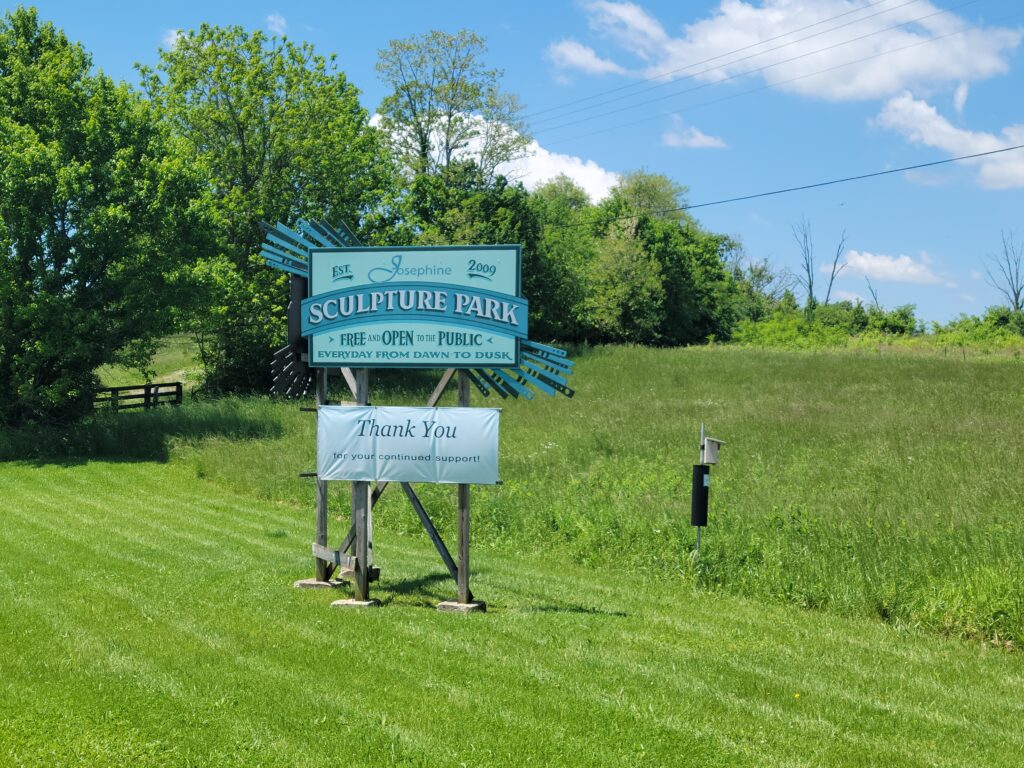
The Visitor Center is one of a self-service variety. No employee or front desk greets you; instead, a small room is adorned with information about the art presented there, the art within the community of nearby Frankfort, events put on by the venue, and a map. It was wonderful spending time in this room built for one or two people at max, and gaining so much information about the park, the local community, and the on-site residency program. I grabbed a map, and my partner and I hit the park.
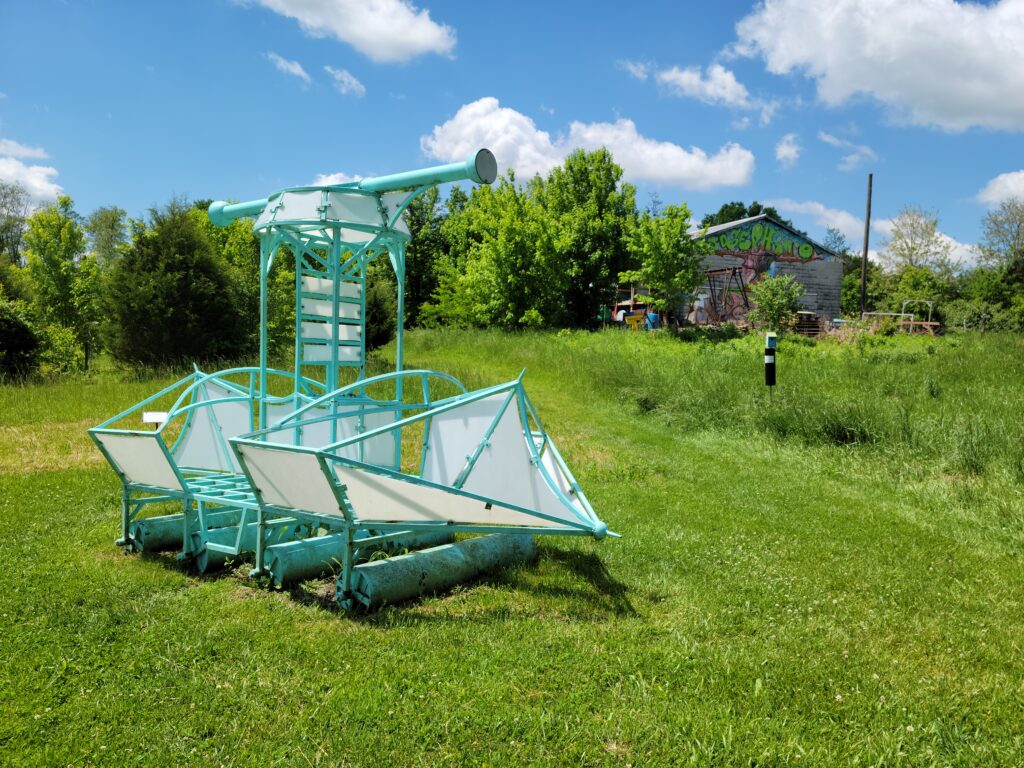
It is hard to pinpoint the nostalgic joy I experienced while exploring this space. With map in hand, it felt almost like a treasure hunt, connecting landmarks and locations as we began our journey through the surprisingly large expanse of the park. It had the same feeling as navigating theme parks with family in my youth, with only a paper map to guide us. Bronze figures, geometric shapes, wooden palaces, and hidden architecture emerged from behind trees, tall grasses, and hedges. The map showed regions of the park as opposed to individual sculptures, so whatever art you found along the way was your own personal victory and secret discovery. With its utilization of natural space and sculptures seemingly at odds with the surrounding agricultural landscape, it felt like a mixture of nature preserve and art museum. In fact, interspersed throughout the sculptures were carefully sign-posted patches where ecological restoration projects were underway and the artwork that aided in this endeavor.
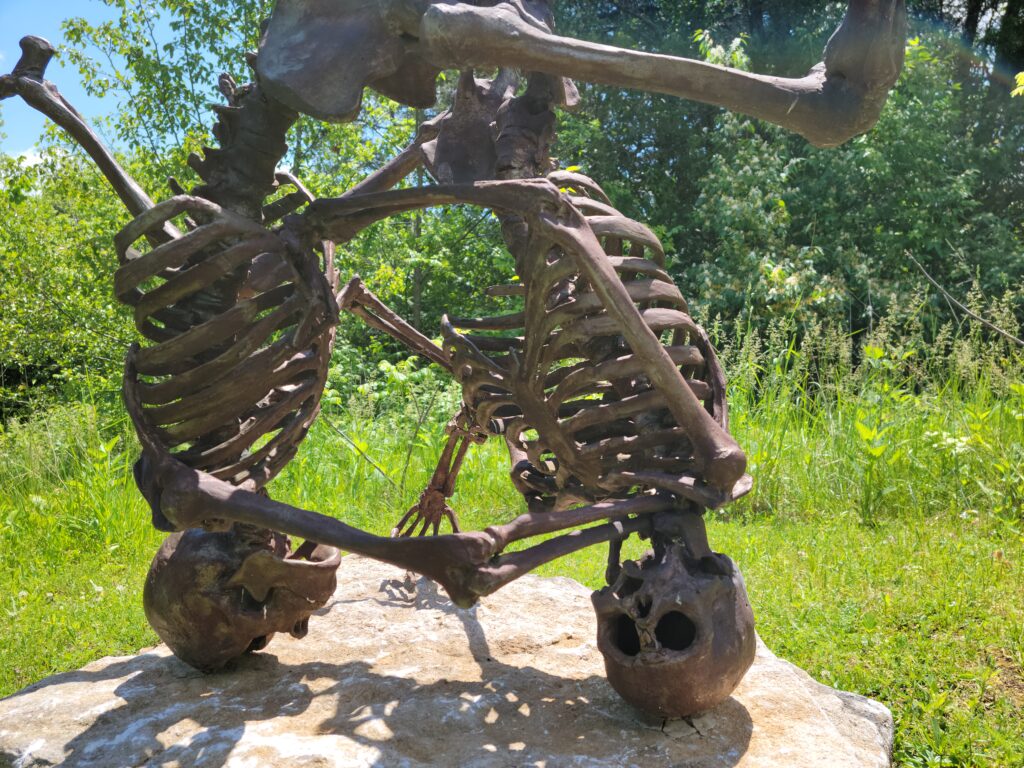
The weather was warm and the sky expansive above the park. An amazing chance to be outside enjoying the environment while intaking a large amount of sculpture in various forms. The initial wing of the park we entered had so many sculptures hidden throughout the hedges that I took it as a personal challenge to find the most efficient pathway through them. A particular joy, emerging suddenly into view past a denser patch of tall grass, was a piece by Araan Schmidt, Upsidedown HoDown, featuring two bronze skeletons intertwined and inverted. This was a bit of a shift from the previous work along the trail, which was more abstract or environmental. My partner and I paused to appreciate the humorous nature of this sculpture before continuing our path to the rest of the works.
We encountered a sculpture of a fish-like humanoid playing the violin, partially submerged in a small pond brimming with life. Like the Creature of the Black Lagoon, this teal figure rises out of the pond. No placard was placed nearby nor was the sculpture placed in plain view, making this one of many hidden gems scattered throughout the park.
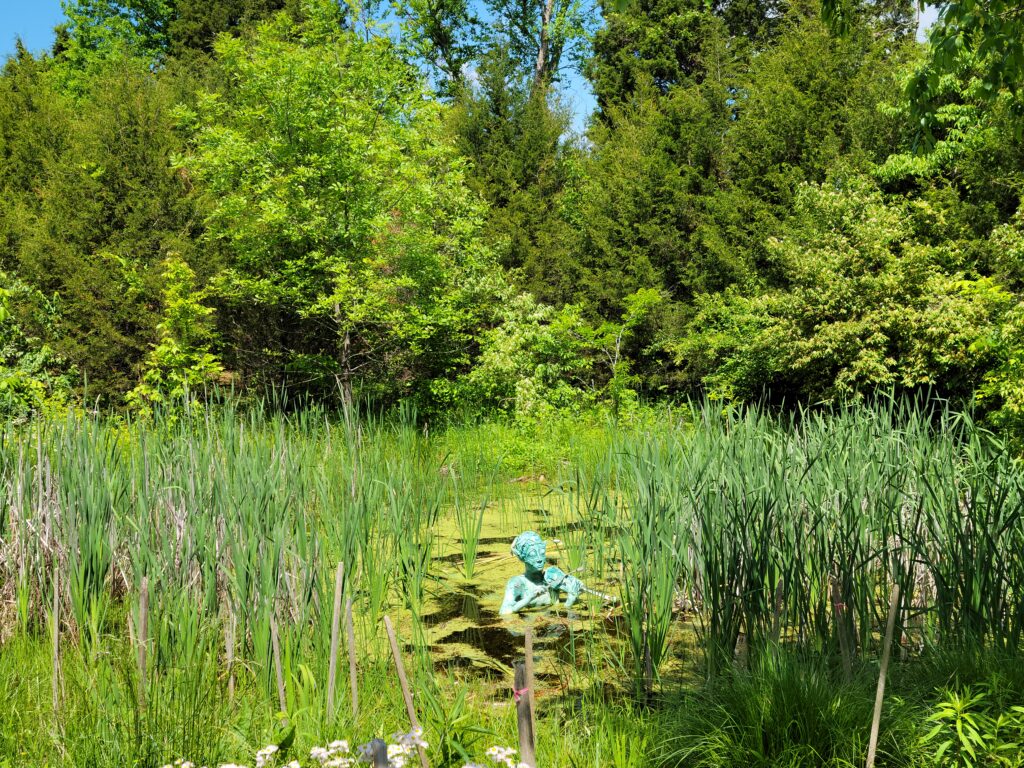
The quantity and quality of the works encourage viewers to take their time exploring the spaces and the environments created. As we moved through the park, I appreciated the placards’ gentle instructions as to whether or not a piece could be interacted with, and the encouragement of play from some of the more environmental pieces such as Justin Roberts’ Sounds of the Whippoorwill. This work is a mass of twisted branches in a curvilinear form, reminiscent of a nesting bird’s home, that lets the viewer go inside and exist in a gentle space. Alexander Gelderman’s Walk the Arc, a series of timber and logs emerging from a mound, invites the viewer/participant to climb and walk along the form.
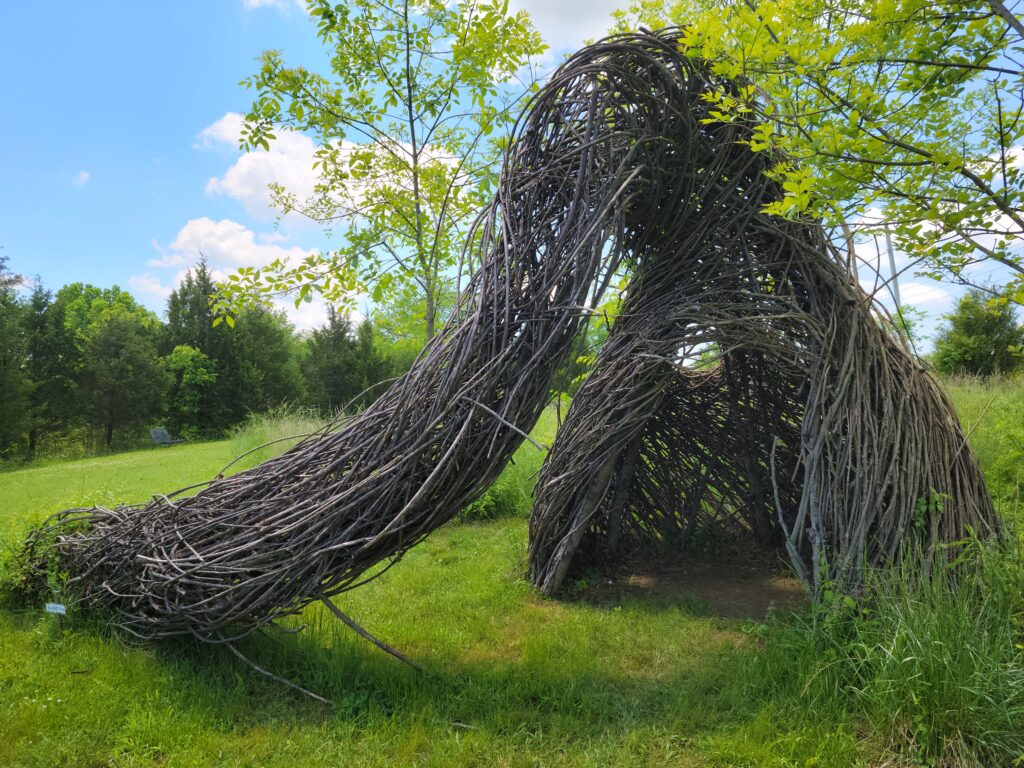
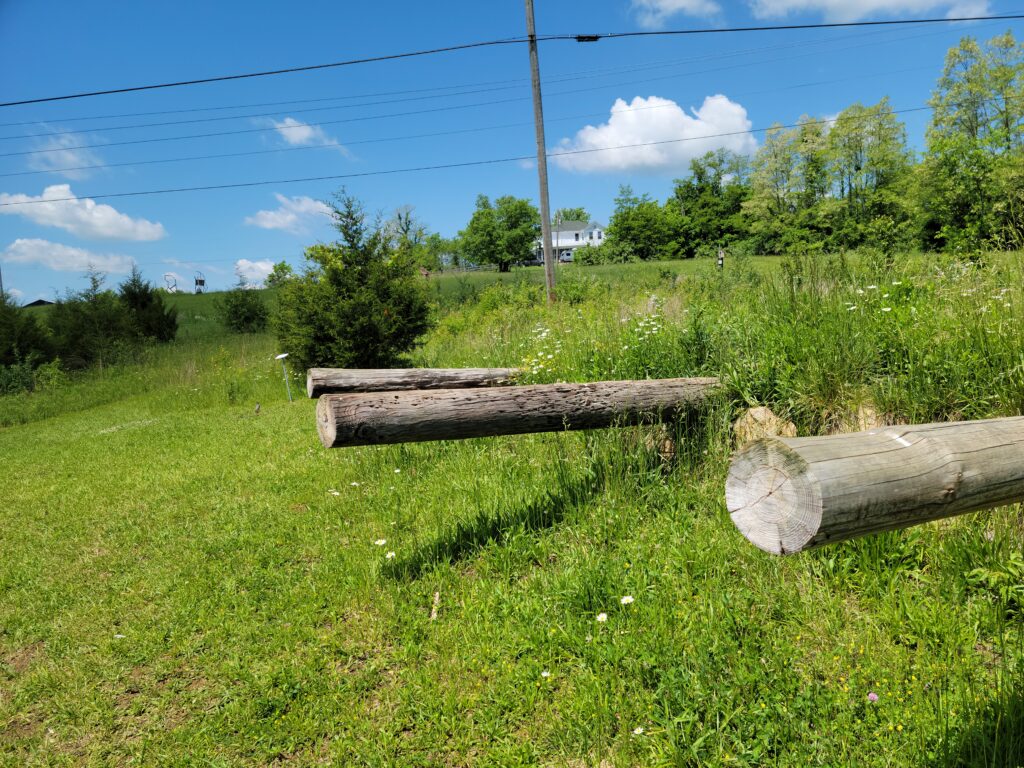
Upon exiting this section of the park, one enters an open field where they encounter again the sculptures that greeted them on entry. This area, having fewer hedges and tree-covering, gives one a beautiful overview of the park’s remaining sculptures underneath the infinite expanse of the Kentucky sky. Like ancient ruins or hidden civilizations, these sculptures feel like remnants of something that happened here. My brain wanted to connect these sculptures to location, in their scattered assortment across the plain, but the only connection was that I was in a sculpture park.
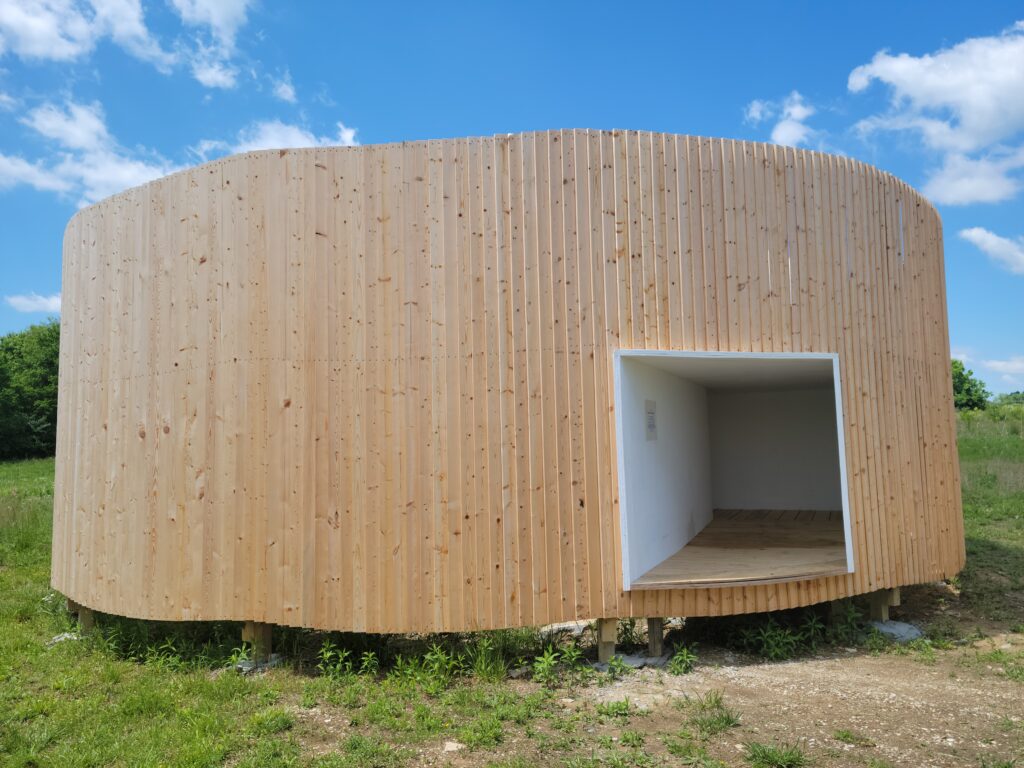
As we danced among the sculptures adorning this field, a large circular wooden form came into view. Constructed of individual planks, its shape recalled a zoetrope. Carved into the form and highly contrasting with the wood grain of the sculpture was a white square entryway. Even from a distance, I knew I wanted to crawl inside, and secretly wished and hoped that this was the intent of the artist. As we approached the form, a sign placed in the entryway gave instructions on how to do exactly that. After some internalized squeals of delight, realizing my wish was going to come true, I looked for a title or artist’s name but none could be found. The call for mystery and exploration finally pulled me from this search, and I entered the sculpture on hands and knees. Rounding the corner, I came to the heart of the sculpture, a small platform with four portholes – one in front, two to the side, and one above, all at the end of square pyramid forms. These windows reflected the sky above at all angles, making me feel as though I had entered a room high above the sky.
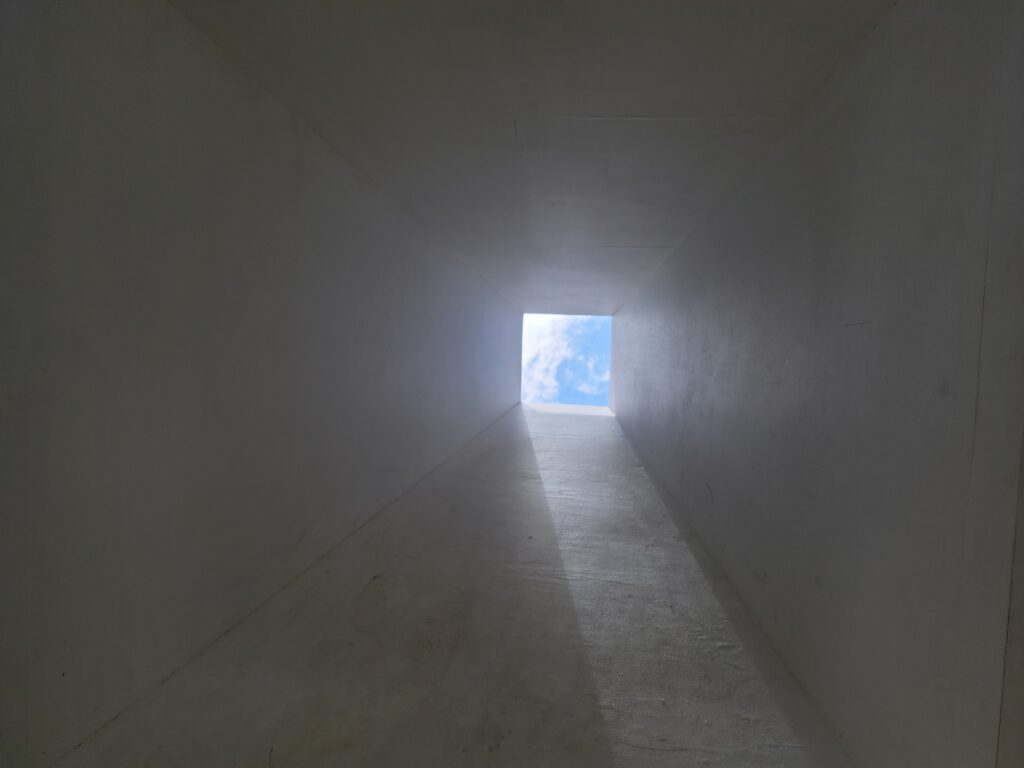
This sensation of magical displacement is hard to describe as it has to be seen in person, but the playful and surreal nature of this piece is a great summary of the experience of Josephine Sculpture Park itself – a magical gem full of hidden delights out in plain sight, that simply must be experienced in person.
Top image: A photo of a multi-colored, intricate, large sculpture with winding bits of metal at the top. A wooden structure is to the left of the sculpture. Both are surrounded by lush green vegetation. Photo by the author.
Josephine Sculpture Park is located at 3355 Lawrenceburg Road, Frankfort, KY 40601.
UnderMain: On the Road sends writers out of Kentucky to explore the visual arts in cities of the Midwest and near South. This program is generously supported by the Great Meadows Foundation.




